Estimated Fees in India
₹ 400 to ₹ 500 per hour
Find Dholak Classes Fees in your locality
Students of Arohi Music Academy are winning laurels at variouscompetitionsheld at different levels including their schools/colleges. Music improves concentration and retention power of students, thereby helping them achieve better grades in academics also. If you want yourself & your child to be a part of AROHI MUSIC ACADEMY you can join your hands with Arohi Music and its faculty which consists of eminent gurus in the field of Vocal music Instrumental as well as Dance. Arohi Music adopts the pattern of one to one teaching in very small groups which is truly a GURU SHISHYA PARAMPRA in modern times.
Shubhkari Music Classes Provides Singing Classes , Indian Classical Music , Light Music, Bhajan , Ghazal , Sufi , Film Songs, Karaoke Singing , Tabla Classes , Dholak Classes , Harmonium Classes , keyboard and Sarangi Classes to all Students. No age limit.
Post your Learning Need
Get customized quotes and responses from Tutors
Choose & Learn from Tutor of your choice

No data available
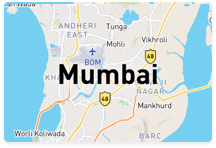
No data available
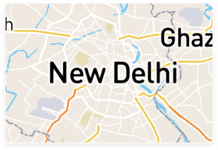
No data available
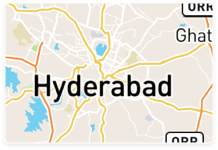
No data available
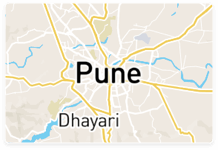
No data available
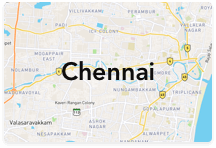
No data available
Answered on 18/11/2024 Learn Music/Instrumental Music/Indian Instrumental Music/Mridangam

Bhuvnesh Dutt
"MUSIC TEACHER WITH MORE THAN 4 YEARS OF EXPERIENCE"
Pakhawaj and Mridangam are both ancient Indian percussion instruments, but they have distinct differences:
*Physical Differences:*
1. Shape: Pakhawaj - cylindrical, Mridangam - barrel-shaped
2. Size: Pakhawaj - typically longer (25-30 inches), Mridangam - shorter (22-25 inches)
3. Material: Both - wood or fiber, but Pakhawaj often has a thicker shell
*Sound Differences:*
1. Tone: Pakhawaj - deeper, more resonant, Mridangam - sharper, more crisp
2. Pitch: Pakhawaj - lower pitched, Mridangam - higher pitched
3. Sonic range: Pakhawaj - wider dynamic range
*Playing Style Differences:*
1. Stroke patterns: Pakhawaj - emphasizes bold, powerful strokes, Mridangam - intricate finger movements
2. Syllable patterns (bols): Pakhawaj - uses distinct bols, Mridangam - uses more complex bols
3. Technique: Pakhawaj - focuses on palm strokes, Mridangam - emphasizes finger strokes
*Cultural and Musical Differences:*
1. Tradition: Pakhawaj - associated with Hindustani classical, Mridangam - associated with Carnatic classical
2. Region: Pakhawaj - originated in North India, Mridangam - originated in South India
3. Musical context: Pakhawaj - often accompanies vocal and instrumental music, Mridangam - integral to Carnatic music ensembles
*Other Key Differences:*
1. Tuning: Pakhawaj - tuned to a specific pitch, Mridangam - tuned to multiple pitches
2. Head material: Pakhawaj - often uses goat skin, Mridangam - uses cow skin or synthetic materials
These differences reflect the unique characteristics and roles of each instrument in Indian classical music traditions.
read lessAnswered on 18/11/2024 Learn Music/Instrumental Music/Indian Instrumental Music/Mridangam

Bhuvnesh Dutt
"MUSIC TEACHER WITH MORE THAN 4 YEARS OF EXPERIENCE"
Playing the mridangam poses technical, physical, and musical challenges:
Technical Challenges:
1. Complex finger movements and strokes
2. Intricate syllable patterns (bols)
3. Maintaining precise rhythm and timing
4. Mastering various tonal variations and dynamics
5. Coordinating left and right hand strokes
Physical Challenges:
1. Building finger strength, endurance, and dexterity
2. Developing calluses and protecting hands from injury
3. Maintaining proper posture and hand positioning
4. Managing fatigue during extended performances
Musical Challenges:
1. Understanding complex ragas and taal cycles
2. Developing musical expression and nuance
3. Improvising and responding to melodic instruments
4. Balancing accompaniment and solo playing
5. Adapting to different musical styles and genres
Practice and Performance Challenges:
1. Finding qualified teachers and guidance
2. Accessing quality instruments and maintenance
3. Overcoming stage fright and performance anxiety
4. Collaborating with other musicians and adapting to ensemble dynamics
Cultural and Traditional Challenges:
1. Preserving traditional playing styles and techniques
2. Innovating within established musical frameworks
3. Bridging cultural and generational gaps
4. Respecting lineage and guru-shishya parampara (teacher-student tradition)
By acknowledging these challenges, mridangam players can better prepare themselves for the dedication, hard work, and passion required to master this revered instrument.
read lessAnswered on 18/11/2024 Learn Music/Instrumental Music/Indian Instrumental Music/Mridangam

Bhuvnesh Dutt
"MUSIC TEACHER WITH MORE THAN 4 YEARS OF EXPERIENCE"
Despite differences, these three iconic Indian percussion instruments share similarities:
*Commonalities:*
1. Hand-played: All three instruments are played with hands.
2. Double-headed: Each instrument has two heads, providing varied tonal possibilities.
3. Rhythmic foundation: All provide rhythmic foundation in Indian classical, folk, and fusion music.
4. Syllabic language: Each instrument uses unique syllables (bols) to create rhythmic patterns.
5. Complex fingerwork: Intricate finger movements and strokes create complex rhythms.
6. Cultural significance: Deeply rooted in Indian culture, mythology, and tradition.
7. Improvisation: All three instruments allow for spontaneous improvisation.
*Shared Techniques:*
1. Stroke patterns (e.g., thumb, index, middle finger strokes)
2. Finger independence and coordination
3. Palm strokes and heel-toe techniques
4. Articulation and tonal control
*Musical Contexts:*
1. Accompanying melodic instruments (e.g., sitar, flute)
2. Solo performances and percussion ensembles
3. Devotional and spiritual music
4. Folk and traditional music
*Shared Materials:*
1. Wooden shells (some modern variations use fiber or synthetic materials)
2. Animal skin or synthetic heads
*Unifying Spirit:*
1. Connecting people through rhythm and music
2. Preserving cultural heritage and traditions
3. Inspiring creativity and self-expression
These similarities highlight the shared essence and rich cultural significance of the dholak, mridangam, and tabla in Indian music and beyond.
read lessHave a question about Dholak Classes Fees? Ask your question and get answers from top Tutors.
Create your FREE UrbanPro profile and grow your income!
Find best tutors for Dholak Classes by posting a requirement.

Get started now, by booking a Free Demo Class